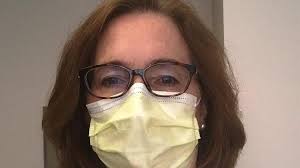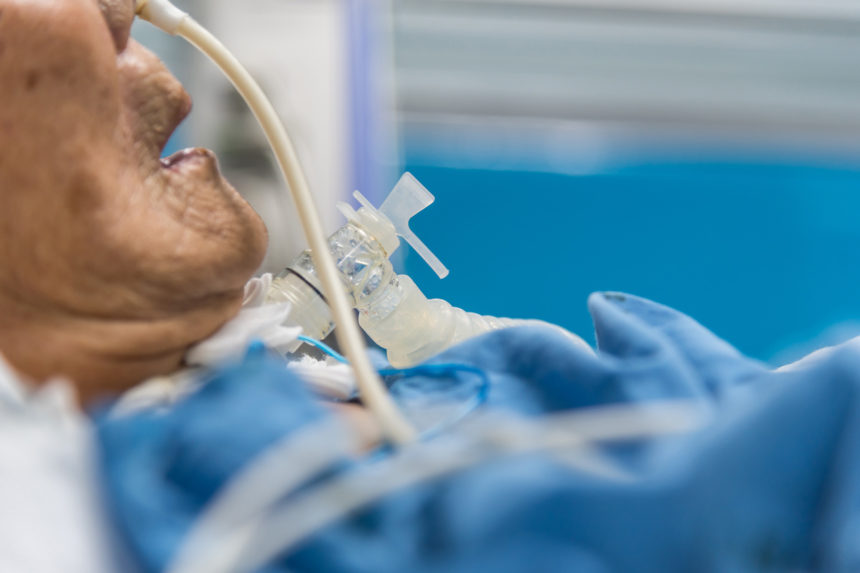Intensive care doctors are our heroes — they remind us to protect yourself and others
As we gradually reopen businesses and the curfew is relaxed, it is not a time to relax our vigilance and safety measures that have allowed us to reduce the infection and death rate from Covid-19 — in Cuenca — and in those parts of the world that have taken measures to protect everyone.
Dr. Michele Parker, a physician in Massachusetts, which had seen one of the highest infection and death rates in the US, notes that the Governor’s decision to require all Massachusetts residents to wear face coverings while out in public or especially in a situation where social distancing (remaining six feet apart) is impractical, is a smart decision.
She says, “the science behind the decision is sound.”
She explains, “The highly contagious coronavirus causing the Covid-19 pandemic is spread through droplets (large particles of moisture that spew out when you cough or sneeze) as well as aerosol particles, very tiny invisible bits of mist that come out of the mouth or nose with talking, singing and breathing. The droplets quickly land on surfaces and flooring, and can be wiped off with disinfectants.
Aerosols remain hanging unseen in the air for hours. Wearing a mask blocks the droplets from spewing and a great proportion of the aerosols from leaking out.”

Dr. Michele Parker, family doctor in Gardner, MA
We have no vaccine or treatment thus far, and the virus is not gone or even weakened. It is virulent and contagious, and wearing a mask protects those around someone who may have an early infection, and masks prevent the spreading of droplets and some of the aerosol particles.
Parker says that yes, at the start of the pandemic it was thought that wearing masks was not necessary, but as the testing and science have evolved it’s been shown that the aerosol droplets are much smaller and remain active in the air much longer than originally thought.
She says, “Instead of seeing social distancing and mask-wearing as a punishment, let’s try to see it as individual heroes doing something awesome for society as a whole. Mass cooperation allows us all to get back to doing our more normal things, while protecting (ourselves) from the virus because it is still around.
The more we can work together this way, the better we will get through this, with more lives saved.” Read more from Dr. Parker here. Read more from the World Health Organization about modes of transmission of the Covid-19 virus here.

An appeal to common sense from those on the front line of caring for victims of Covid-19
The Facebook page ‘Cuenca Expat Assist‘ published this letter from doctors of the intensive care unit of the Hospital Vicente Corral Moscoso.
We want to appeal to the common sense of the people who have taken the lack of confidence as if the pandemic had ended and we had returned to normality before the beginning of this crisis.
Even after so many deaths, worldwide, many citizens do not take seriously that we have to protect ourselves and others, putting the greatest emphasis on the use of masks, gloves and safety distance.
Infection with the coronavirus is not a common cold, after a few beginnings of high fevers, sore throats and tightness in the chest as if your life is going, the worst comes, you need resuscitation.
There is talk of ventilation but many people do not know what it is really about.
It is not an oxygen mask put in your mouth while you enjoy lying down thinking about your life …
Invasive ventilation for COVID19 (intubation performed under general anesthesia) consists of remaining motionless for 2 to 3 weeks, often face down (prone) with a tube in the mouth up to the trachea and allowing it to breathe at the rate of the machine to which it is connected.
You cannot speak, eat, or do anything naturally.
The discomfort and pain you feel require the administration of sedatives and pain relievers to ensure tolerance to the tube.
For as long as the patient needs the machine to breathe he will be in an induced coma, that is, an artificial coma.
In 20 days with this treatment, a young patient has a loss of muscle mass of 40% and the subsequent re-education will be 6 to 12 months, associated with trauma to the mouth or vocal cords.
It is for this reason that elderly or already fragile people cannot endure.
If you read this message so far, we would appreciate it if you could share it so that we all take this seriously, now that they are coming out again … please follow the directions and take it more seriously.
This pandemic ends when the vaccine is found.
________________________________
En Español
Queremos hacer un llamamiento al sentido comun de las personas que han tomado el desconfinamiento como si se hubiese terminado la pandemia y hubieìsemos vuelto a la normalidad anterior al comienzo de esta crisis.
Todaviìa despueìs de tantos fallecimientos, a nivel mundial, muchos ciudadanos no se toman en serio que tenemos que protegernos y proteger a los demaìs, poniendo el mayor eìnfasis en el uso de mascarillas, guantes y distancia de seguridad.
Infectarse con el coronavirus no es un resfriado comuìn, despueìs de unos comienzos de fiebres altas, dolores de garganta y opresioìn en el pecho como si se te fuera la vida, llega lo peor, necesitas reanimacioìn.
Se habla de ventilacioìn pero mucha gente no sabe de lo que en verdad se trata.
No es una maìscara de oxiìgeno puesto en la boca mientras usted disfruta acostado pensando en su vida…
Usted no puede hablar, ni comer, ni hacer nada de manera natural.
La molestia y el dolor que siente necesitan de la administracioìn de sedantes y analgeìsicos para asegurar la tolerancia al tubo.
Durante el tiempo que el paciente necesite la maìquina para respirar estaraì en un coma inducido, esto es, un coma artificial.
En 20 diìas con este tratamiento, un paciente joven llega a tener una peìrdida de masa muscular de un 40% y la posterior reeducacioìn seraì de 6 a 12 meses, asociado a traumatismos de la boca o de las cuerdas vocales.
Es por esta razoìn que las personas ancianas o ya fraìgiles no aguantan.
Si llegastes a leer este mensaje hasta aquiì, te agradeceriìamos que lo compartieras para que entre todos nos tomemos en serio esto, ahora que se estaìn volviendo a salir…que sigan por favor las indicaciones y se lo tomen maìs en serio.






















